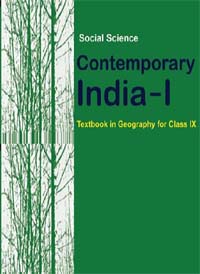Class 9 - Social Science : Contemporary India I
Chapter 6 - Population

Top Block 1
Question : 1 Why is the rate of population growth in India declining since 1981?
Answer :
Since 1981, however, the rate of growth started declining gradually. During this period, birth rates declined rapidly. Still 182 million people were added to the total population in the 1990s alone.
Question : 2 Discuss the major components of population growth.
Answer :
There are three main components of population growth are birth rates, death rates, and migration.
Question : 3 Define age structure, death rate, and birth rate.
Answer :
The birth rate is the number of live births per thousand persons in a year. It is a major component of growth because, in India, birth rates have always been higher than death rates.
Death rate is the number of deaths per thousand persons in a year.
The age composition of a population refers to the number of people in different age groups in a country.
Question : 4 How is migration a determinant factor of population change?
Answer :
Migration is the movement of people across regions and territories. Migration can be internal (within the country) or international (between the countries). Internal migration does not change the size of the population but influences the distribution of population within the nation. Migration plays a very significant role in changing the composition and distribution of a population.
Question : 5 Distinguish between population growth and population change.
Answer :
♦ Population growth
Growth of population refers to the change in the number of inhabitants of a country/territory during a specific period of time, say during the last ten years. Such a change can be expressed in two ways: in terms of absolute numbers and in terms of percentage change per year.
♦ Population change
There are three main processes of change of population: birth rates, death rates, and migration. The natural increase of population is the difference between birth rates and death rates.
The birth rate is the number of live births per thousand persons in a year. The death rate is the number of deaths per thousand persons in a year. The third component of population growth is migration.
Migration is the movement of people across regions and territories. Migration can be internal (within the country) or international (between the countries). Internal migration does not change the size of the population but influences the distribution of population within the nation. Migration plays a very significant role in changing the composition and distribution of population
Question : 6 What is the relation between occupational structure and development?
Answer :
The percentage of a population that is economically active is an important index of development. The distribution of the population according to different types of occupation is referred to as the occupational structure. An enormous variety of occupations are found in any country The proportion of people working in different activities varies in developed and developing countries.
Developed nations have a high proportion of people in secondary, and tertiary activities. Developing countries tend to have a higher proportion of their workforce engaged in primary activities. In India, about64 percent of the population is engaged only in agriculture.
The proportion of population dependent on secondary and tertiary sectors is about 13 and 20 percent respectively. There has been an occupational shift in favour of secondary and tertiary sectors because of growing industrialization and urbanisation in recent times.
Question : 7 What are the advantages of having a healthy population?
Answer :
Health is an important component of population composition, which affects the process of development. Sustained efforts of government programmes have registered significant improvements in the health conditions of the Indian population.
Death rates have declined from 25 per 1000 population in 1951 to 8.1 per 1000 in 2001 and life expectancy at birth has increased from 36.7 years in 1951 to 64.6 years in 2001.
The substantial improvement is the result of many factors including improvement in public health, prevention of infectious diseases and application of modern medical practices in diagnosis and treatment of ailments. Despite considerable achievements, the health situation is a matter of major concern for India.
The per capita calorie consumption is much below the recommended levels and malnutrition afflicts a large percentage of our population. Safe drinking water and basic sanitation amenities are available to only one third of the rural population. These problems need to be tackled through an appropriate population policy.
Mddle block 1
Question : 8 What are the significant features of the National Population Policy 2000?
Answer :
The significant features of the National Population Policy 2000 are:
1. NPP 2000 identified adolescents as one of the major sections of the population that need greater attention.
2. Besides nutritional requirements, the policy put greater emphasis on other important needs of adolescents including protection from unwanted pregnancies and sexually transmitted diseases (STD).
3. It called for programmes that aim towards encouraging delayed marriage and child-bearing, education of adolescents about the risks of unprotected sex, making contraceptive services accessible and affordable, providing food supplements, nutritional services, strengthening legal measures to prevent child marriage.



